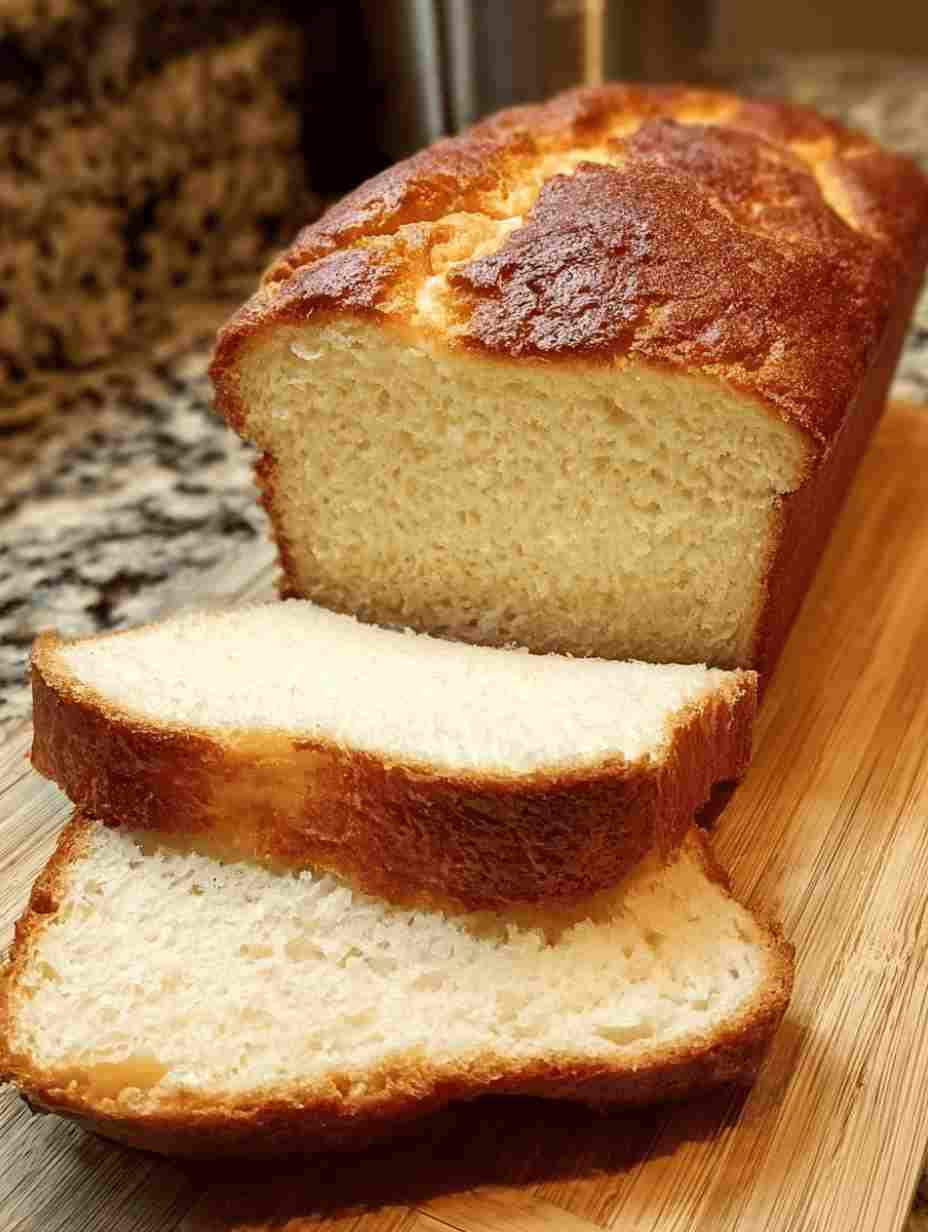If you’re craving a soft, pillowy loaf that’s perfect for sandwiches, toast, or just slathering with butter, this gluten-free white bread recipe is exactly what you need. Imagine slicing into a golden-brown crust, revealing a tender, airy interior that’s surprisingly soft for a gluten-free bread. With simple pantry ingredients, this loaf brings the comforting flavors of homemade bread to your kitchen without the gluten.
Whether you’re making breakfast sandwiches, afternoon toast, or a hearty dinner side, this bread has the perfect balance of soft crumb and structure. Its light texture is ideal for spreading jam, layering deli meats, or enjoying alongside soups and stews. Plus, it’s easy enough for a weeknight baking session yet impressive enough to serve at brunch or family gatherings.
Why You’ll Love This Recipe
-
Soft & Fluffy: Achieves a tender, airy texture uncommon in gluten-free breads.
-
Simple Ingredients: Uses everyday pantry staples and minimal equipment.
-
Family-Friendly: Mild flavor and soft texture appeal to kids and adults alike.
-
Versatile: Perfect for sandwiches, toast, or alongside soups.
-
Reliable Results: Step-by-step instructions prevent dense or crumbly loaves.
-
Make-Ahead Friendly: Can be baked and stored or frozen for later use.
Ingredient Breakdown
Gluten-Free All-Purpose Flour: The base of the dough; ensures structure while keeping it free of gluten.
Xanthan Gum: Acts as a binding agent to mimic gluten, providing elasticity and chewiness. Skip if your flour blend already contains it.
Instant Yeast: Leavens the bread for a soft, airy crumb.
Sugar: Feeds the yeast and slightly sweetens the bread for better flavor.
Salt: Enhances flavor and strengthens the dough structure.
Warm Milk: Activates the yeast and adds moisture for a soft texture.
Eggs: Contribute richness, structure, and color.
Vegetable Oil: Keeps the bread tender and prevents it from drying out.
Pro Tips
-
Check Dough Consistency: Gluten-free dough is slightly stickier than traditional bread—avoid adding too much extra flour, which can make it dense.
-
Use Warm Milk: Ensure the milk is around 110°F; too hot will kill the yeast, too cold slows the rise.
-
Don’t Skip Second Rise: Gives the loaf better volume and prevents a heavy, dense texture.
-
Cool Completely Before Slicing: Gluten-free bread sets as it cools, making it easier to cut without crumbling.
-
Pan Prep: Greasing and lightly flouring the loaf pan prevents sticking and helps the crust release cleanly.
Ingredient Swaps & Variations
-
Milk Alternatives: Swap cow’s milk for almond, oat, or soy milk for a dairy-free version.
-
Flour Blends: Any 1:1 gluten-free flour blend works; adjust xanthan gum accordingly.
-
Oil Options: Substitute vegetable oil with melted coconut oil or olive oil for a different flavor profile.
-
Egg-Free Version: Replace eggs with flax or chia eggs for vegan-friendly bread.
-
Sweet Variations: Add 1 teaspoon cinnamon or a tablespoon honey for slightly sweet bread.
Serving Suggestions
-
Classic Sandwich: Layer with turkey, cheese, lettuce, and tomato.
-
Breakfast Toast: Spread with butter, jam, or peanut butter.
-
Soup Companion: Perfect alongside creamy soups, chili, or stews.
-
Garlic Bread Upgrade: Brush with garlic butter and bake for a quick side dish.
Make Ahead + Storage Tips
-
Storage: Store at room temperature in a sealed bag or container for up to 3 days.
-
Freezing: Slice and freeze for up to 2 months. Toast directly from frozen or thaw before serving.
-
Reheating: Warm slices in a toaster or oven for a fresh-baked texture.
-
Prep Ahead: Dough can be made the night before and stored in the fridge; bake fresh in the morning.
Cultural Notes
Gluten-free baking has become a staple in modern kitchens due to dietary restrictions and increased awareness of celiac disease. While traditional white bread relies on gluten for structure, modern gluten-free recipes like this one use xanthan gum and precise ratios of wet and dry ingredients to recreate that soft, fluffy texture. This recipe merges comfort food nostalgia with dietary inclusivity, allowing everyone to enjoy homemade bread without compromise.
Frequently Asked Questions (FAQ)
Can I use active dry yeast instead of instant yeast?
Yes, but dissolve it in the warm milk first and let it bloom for 5–10 minutes before adding to the flour.
Why is my gluten-free bread dense?
This often happens if the dough didn’t rise enough or if too much flour was added. Ensure a warm environment and follow rise times carefully.
Can I make this bread dairy-free?
Absolutely! Substitute warm milk with plant-based milk and use oil instead of butter if adding richness.
Can I use a bread machine?
Yes, combine ingredients in the machine’s order suggested for gluten-free bread and use the gluten-free setting.
Why is my bread crumbly after baking?
Cutting the bread too soon or skipping xanthan gum can cause crumbling. Allow it to cool fully and ensure the gum is included if your flour blend doesn’t have it.

Wonderful Gluten Free White Bread
Ingredients
Equipment
Method
- In a large bowl, combine gluten-free flour, xanthan gum (if needed), yeast, sugar, and salt. In a separate bowl, mix warm milk, eggs, and oil. Gradually add the wet ingredients to the dry mixture, stirring until smooth and well combined.
- Cover the bowl with plastic wrap and let the dough rise in a warm place for 30–45 minutes, or until it doubles in size.
- Grease a 9x5-inch loaf pan. Transfer the dough into the pan, smoothing the top with a spatula.
- Cover the pan and let the dough rise for another 30 minutes, or until it just reaches the top of the pan.
- Preheat your oven to 375°F (190°C). Bake for 35–40 minutes, or until the top is golden brown and the bread sounds hollow when tapped.
- Let the bread cool in the pan for 10 minutes, then transfer it to a wire rack. Slice and enjoy fresh or toasted.

